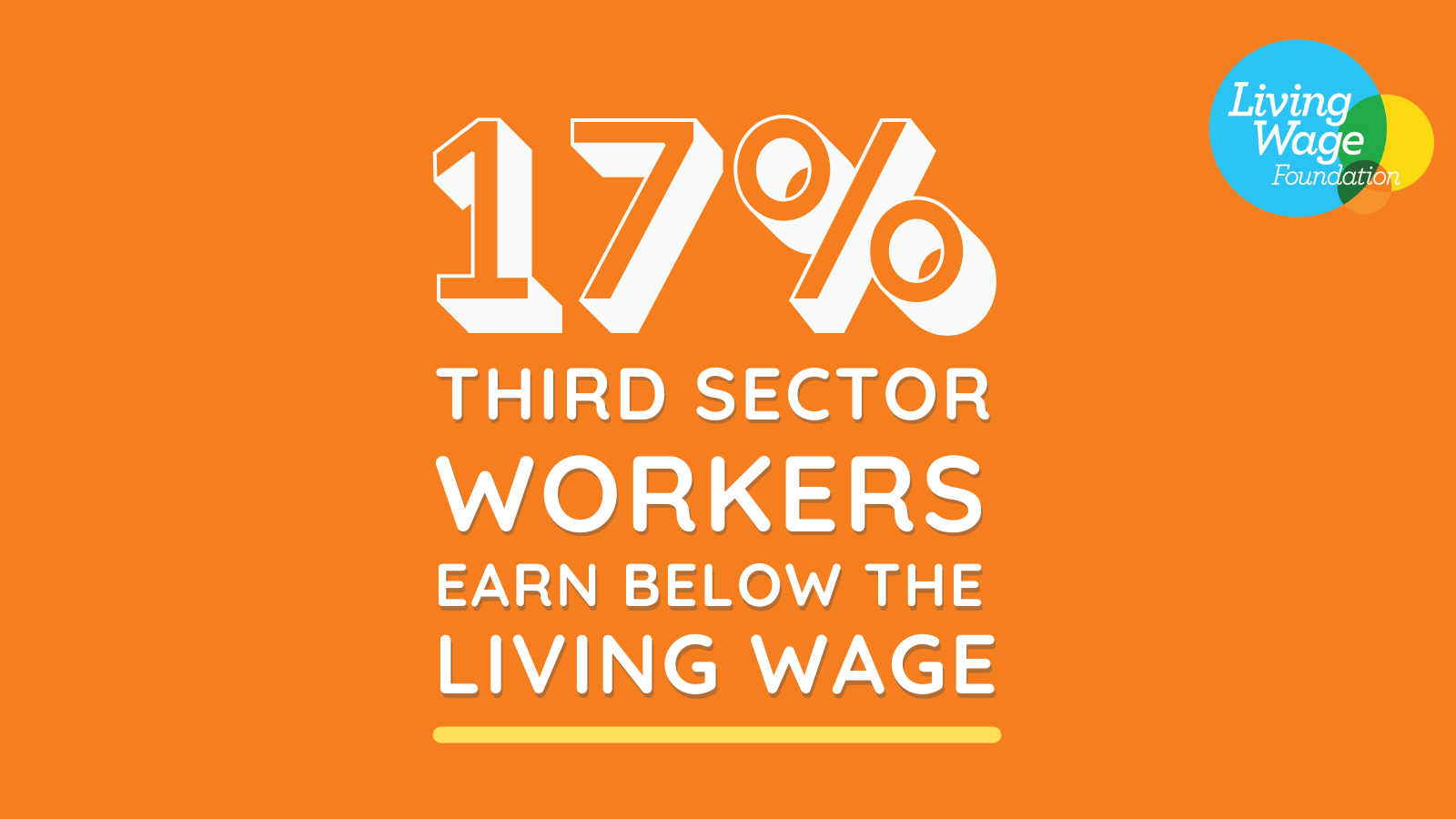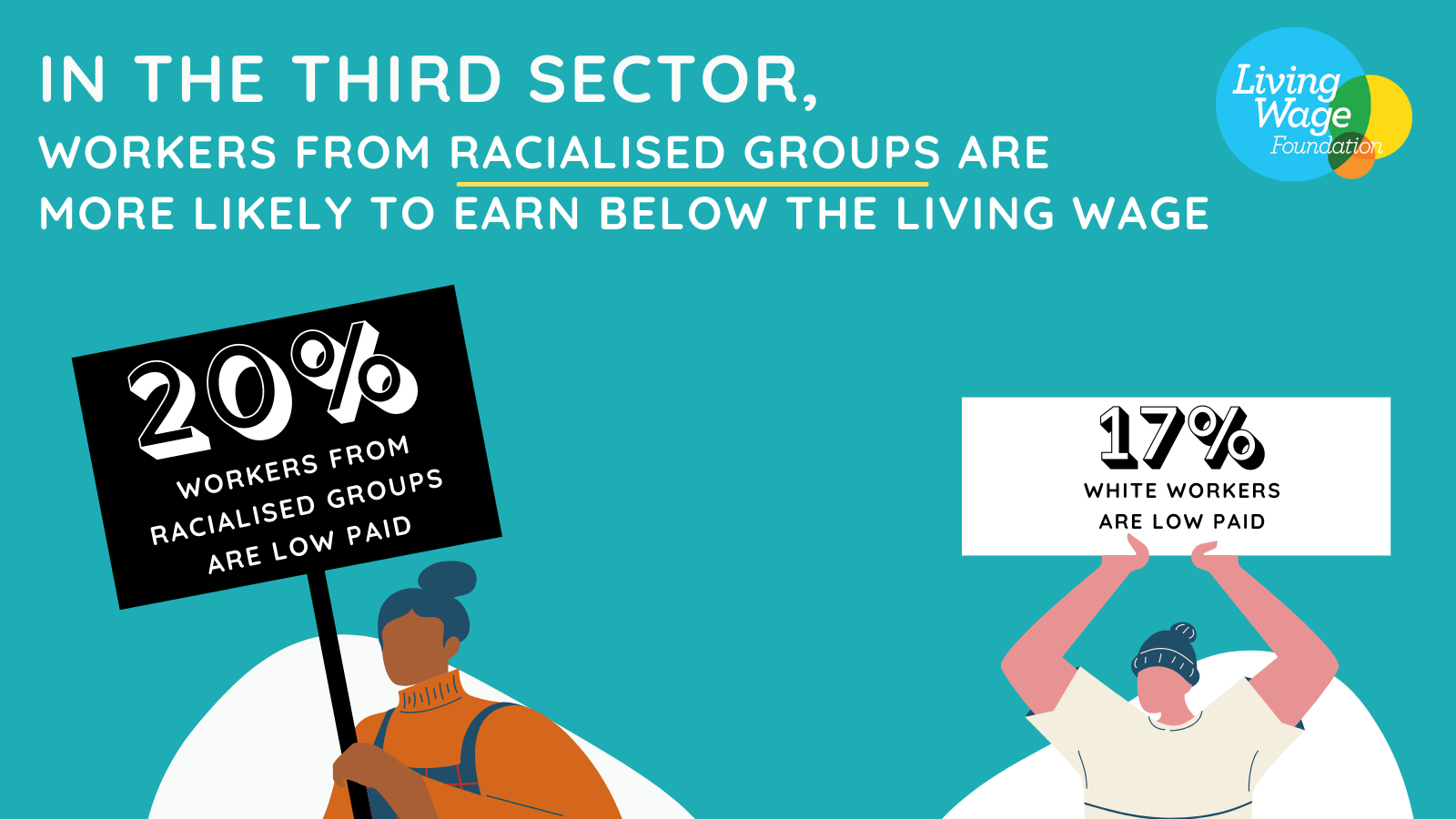New research shows low pay continues to be an issue in the third sector and is a particular issue for women, disabled workers, those from racialised groups and part time workers.
A fifth (17%) of workers in the third sector earn below the Living Wage, amounting to 388,000 workers nationally. The rate of low pay in the sector is the same as it was five years ago, despite low pay in the public and private sectors' decreasing, according to new research from the Living Wage Foundation.
Low paid third sector workers are also more likely to have lost work through the pandemic, with half (48%) of low paid third sector workers being 'away from work' (mainly due to Furlough) during the height of the pandemic (Q2 2020), compared to just 20% of those earning at or above the Living Wage.
The sector is still coming to terms with the financial impact of the pandemic, with two thirds (63%) of third sector organisations reporting increased demand over during Covid-19,1 and 83% projecting a decline in income2, meaning things could get worse before they get better for low paid workers.

The research showed certain third sector workers faced a greater risk of earning less than the real Living Wage (£9.50 outside of London and £10.85 within London). For example:
-
19% of women are paid below the Living Wage, compared to 13% of men.
-
20% of workers from racialised groups are paid below the Living Wage, compared to 17% of white workers.
-
29% of part time workers earn below the Living Wage, compared to 9% of full-time workers.
-
20% of disabled workers earn below the Living Wage, compared to 15% of those without a disability.

Graham Griffiths, Interim Director of the Living Wage Foundation, said:
"During Covid-19, the third sector has been a lifeline for millions of families across the country, providing them with everyday needs like food, clothes and educational equipment. Our research shows that many of these workers have been providing these services despite earning below the Living Wage and being unable to afford them themselves. After more than a year of pandemic firefighting, the third sector has some time to think about how it rebuilds through and beyond Covid-19. To continue to provide essential services year-round and attract new people into the sector, providing workers with a real Living Wage must be at the heart of this process.
We urge third sector organisations who can do so to become Living Wage employers, and for funding providers to become Living Wage Funders to help spread and support the growth of Living Wage jobs in the sector".
Notes to Editors:
Living Wage Foundation Media Contacts for interviews and case studies: John Hood - john.hood@livingwage.org.uk / 07507 173649 or Tom Blin - thomas.Blin@livingwage.org.uk / 07706 217589
LOW PAY IN THE THIRD SECTOR RESEARCH BRIEFING
Read our research briefing to understand the scale of low pay in the Third Sector, including who is disproportionately affected.

